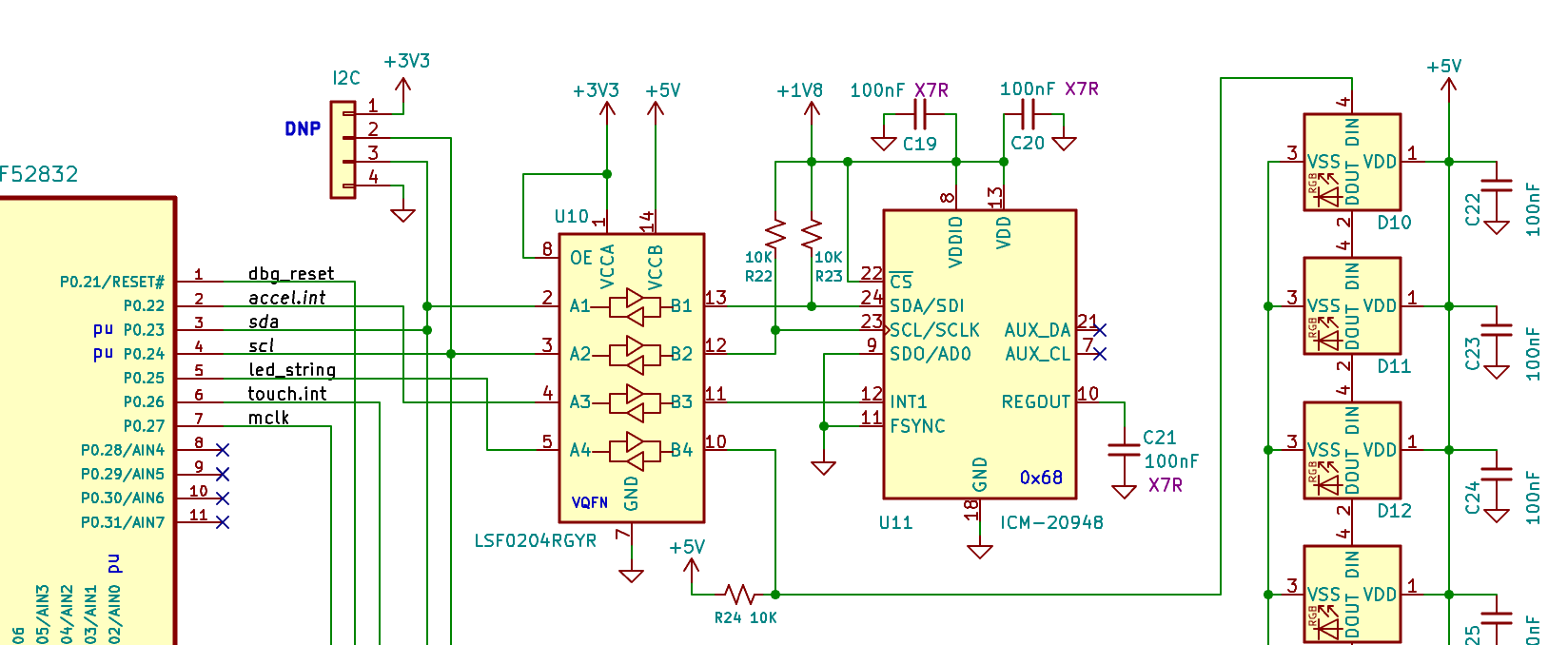Hi,
The documentation for the LSF0204RGYR is not very clear and has several errors and incomplete sentences not to mention conflicting examples. It claims you are able to use each channel to translate different voltages (from A to B or from B to A) but then gives a conflicting example.
Basically I want to use 3 channels to translate I2C at 3.3v to 1.8v AND THEN use the fourth channel to translate a 3.3v signal to 5v.
Question 1) Can this be done?
Question 2) What should VrefA and VrefB be set to?
Here's a partial schematic:
Thank you,
Kevin
bard-designs.com



